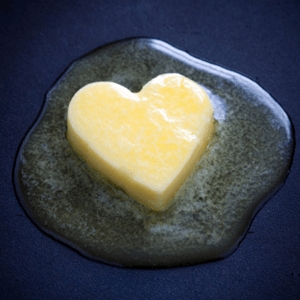We did it for Pork Chops. Now, it’s time to ensure that your occasional splurge on beef is not scarred by cooking accidents or under appreciated due to misapprehensions. Today, we present the hands down best way to cook Steak!

Before beef – and steak in particular – became way too expensive for me to even consider buying, I loved a properly prepared, fairly thick Ribeye or Sirloin Strip. And all the better if it was cooked outdoors on a sizzling grill! Alas, for most of us here in the Great White North, grilling season is a bare 5 months long, from May to September. If that, depending on the weather.
So… Many of us have adopted the methods and secrets that pro chefs use to get the most out of a nice steak – on our stove tops and in our ovens.
Not as clear-cut as you might think!
There are some rules you must follow to produce the prefect steak, whether cooking indoors or out. And they are RULES, not suggestions or options.
Note: We’re assuming, here, that you haven’t marinated your steak in advance of cooking. That’s another set of similar, but not identical Rules. These, too, are rules, and must be followed to the letter to ensure the best finish on your marinated steak! We’ll save these for outdoor grilling season!
Let your steak come to room temperature
This is extremely important. Though most folks unversed in the mysteries of steak are unaware of this rule. Let the meat sit out on a plate, under cover of a clean tea towel for about 30 minutes before proceeding with preparation. If the meat is cooked right out of the fridge, it will overcook on the outside before it cooks properly on the inside.
Pat it dry with a paper towel
This is key to getting a good sear on your steak. And the sear is the basis of the coveted crust you want the seasonings and spices to form, against the umami background of caramelized meat juices.
Brush the meat lightly on both sides with the oil of tour choice. I always go with Virgin Olive.
Season generously with salt and pepper
You may also want to add some smoky favour or other spices. Leave the smoke for the grill treatment. For the stove, I recommend the legendary Montréal Steak Spice.
‘Grill’ in a cast iron pan
Preheat the skillet in a 400 F oven for 20 minutes or heat it on high on top of the stove for 10 minutes. Test that the pan is ready by adding a drop of water to it. The water should evaporate immediately. I have a special grilling pan I use for steaks and chops exclusively. It has ridges on the bottom that produce grill marks like a classic gas or charcoal grill!
Place the steak in a dry pan. Sear for a few minutes on each side. Don’t move the steak around while searing. Just turn it once. The steak is ready to turn when it no longer sticks to the pan.
Add a pat of butter on top. This is an ancient chef trick to baste the steak and optimize the crust. The top steak artists always use a compound, or chef’s butter – softened butter with their own personal blend of herbs mixed in.
Finish the steak in a 375 F oven.
How long do you cook it?
The steak pros boast that they can tell when a steak is cooked to the desired doneness simply pressing lightly on it with a finger. Don’t fuss with that. It’s theatre. And it’s imprecise. Use a food thermometer to check for the degree of doneness you want:
- For medium-rare, cook the steak to 130 – 135 degrees F
- For medium, cook to 135 – 140 degrees
- For medium-well, cook to 140 – 150 degrees F.
Rest the steak
Be sure to rest the steak for 5 minutes at least under a foil tent before serving. This gives a chance for the fibres in the meat to relax, ensuring maximum tenderness. And right out of the pan, it’ll probably be too hot to eat.
My take
This is how I do it. And since I began to follow these simple rules, I’ve never been disappointed in a steak!
Thanks to Food & Wine for the article I consulted to double-check myself on this topic, and to CNN for reposting it!
Maggie J.

